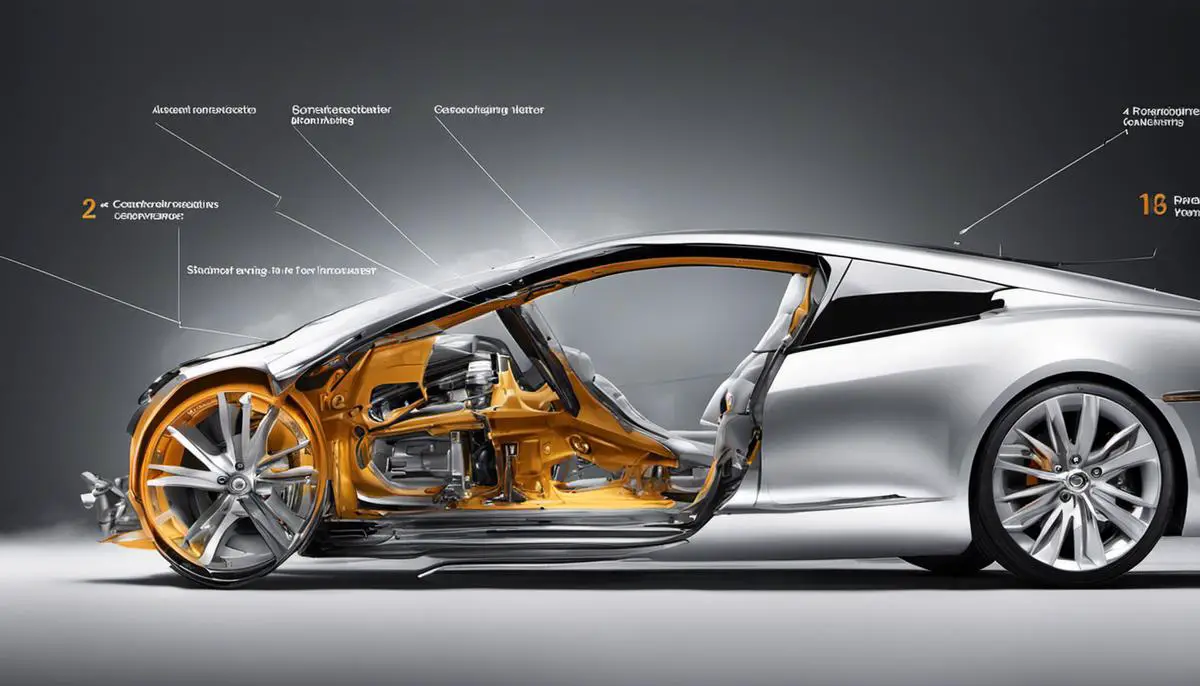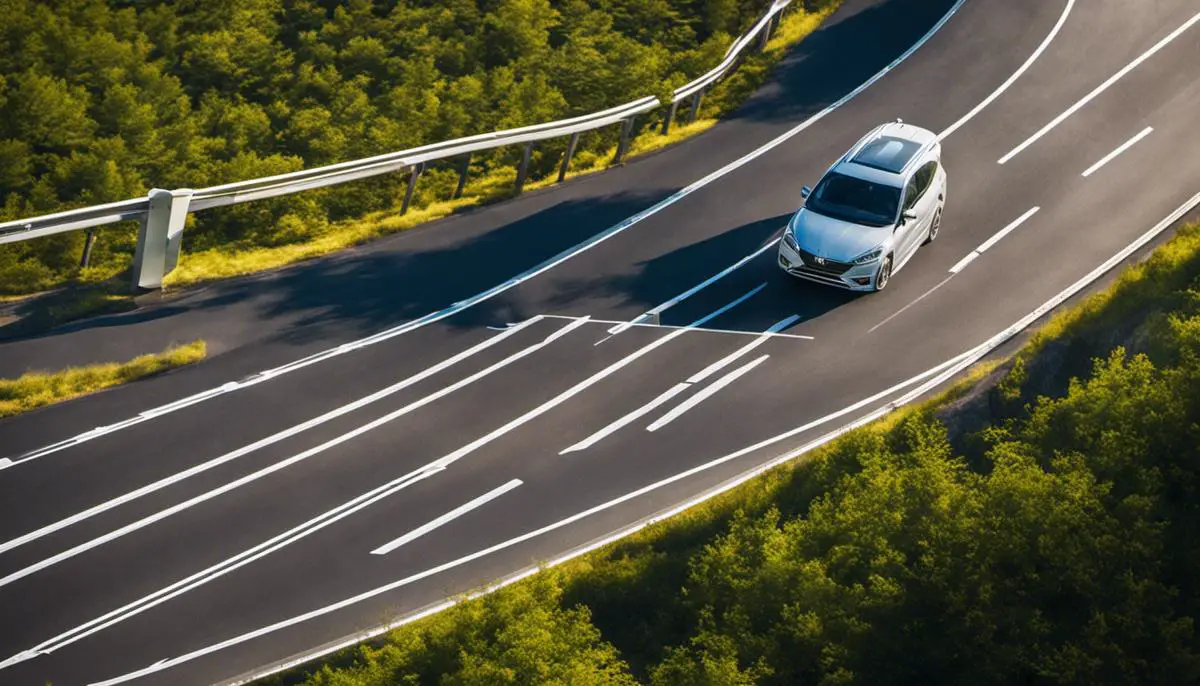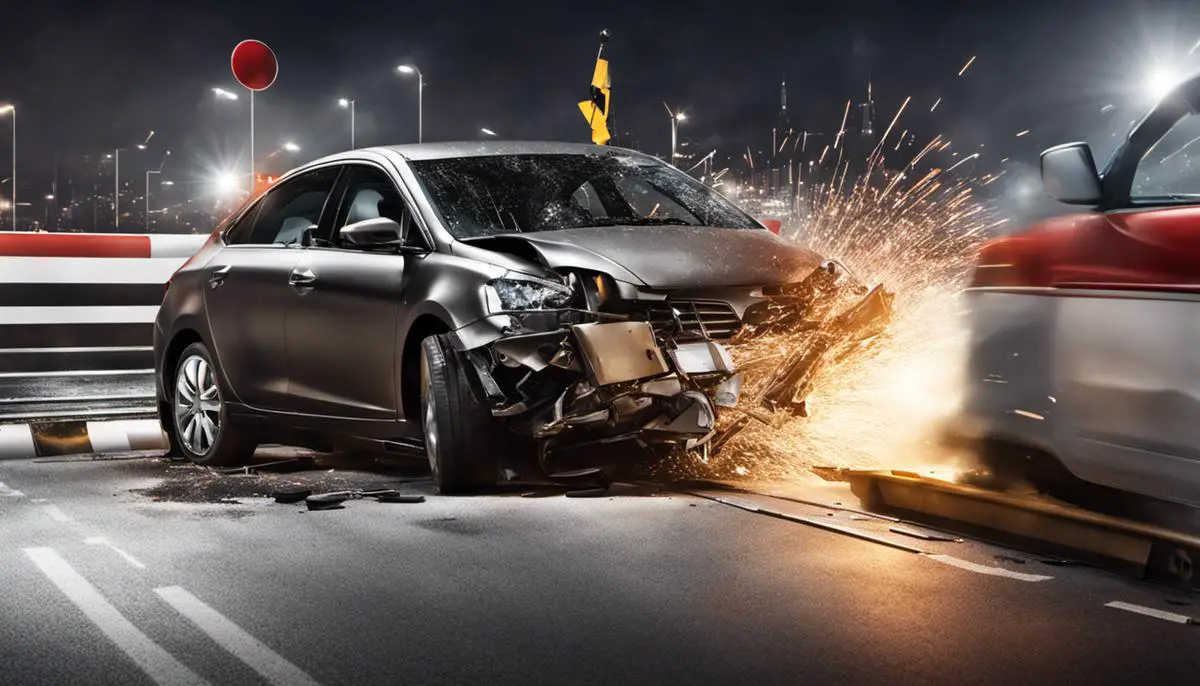Automobile safety is a paramount concern for both consumers and manufacturers alike. The veritable gauntlet of crash test ratings gauges an automobile’s ability to withstand and counteract the damages of accidents, thereby playing a crucial role in the vehicle’s market value and overall desirability. This essay delves deep into the key aspects that automobile manufacturers focus on to achieve top crash test ratings. These include the formulation of vehicles based on the principles of crashworthiness, the impact of vehicle structure and design on crashworthiness, the role of safety features and technologies, the comprehension of crash test methodologies, and the determinant regulatory requirements and certification.
Contents
The Principle of Vehicle Crashworthiness
Exploring Key Principles in the Design and Manufacture of Crashworthy Vehicles
In an era where advancements in automotive technology are accelerating at an unprecedented rate, the enhancement of vehicle crashworthiness remains a fundamental cornerstone. Crashworthiness, defined as a vehicle’s ability to protect its occupants during an impact, encompasses a broad spectrum of the design, including structural integrity, restraints, fuel systems, and post-crash behavior. Understanding these principles consequently expands our collective knowledge, ensuring the continued development of safer, more resilient vehicles.
A central facet of vehicle crashworthiness is the use of structures designed for engineered deformation. The concept of ‘crumple zones’ is a pivotal example of this principle. Crumple zones are specifically designed areas of a vehicle that deform upon impact, absorbing the energy produced by the collision and reducing its transmission to the occupants. Originally patented by Mercedes-Benz in 1952, this innovation remains integral to vehicle design, emphasizing the ongoing relevance of controlled deformation in enhancing occupant protection.
The suitable placement and use of restraint systems underscore an additional core principle in vehicle crashworthiness. Seat belts, airbags, and child safety seats illustrate a triad of restraints employed to mitigate occupant injury during a collision. When pairing advanced restraint systems with structural innovations such as crumple zones, the vehicle’s overall crashworthiness is substantially improved, further safeguarding the occupants from potential harm.
Moreover, the design and construction of fuel systems represent a critical consideration in crashworthy vehicle manufacturing. Post-crash fires contribute significantly to fatal outcomes following a vehicular collision. Therefore, the development of fuel systems resilient to rupture or leakage upon impact is paramount, evoking a pressing need for materials and technologies that can effectively withstand severe crash conditions.
Post-crash behavior also stands as a dominant factor in vehicle crashworthiness. From the concept of occupant extraditability, focusing on efficient extraction of occupants post-crash, to the management of scenarios involving vehicle submersion or fires, there are multiple perimeters where post-crash design can drastically influence the survivability of an accident.
Moving forward, the role of crash avoidance technologies emerges as a significant development in the pursuit of ultimate crashworthiness. Autonomous braking systems, lane departure warning systems, collision warning systems, and other driver-assist technologies have the potential to revolutionize the field and potentially reshape the fundamentals of crashworthy design.
In conclusion, the shaping principles of crashworthy vehicle design and manufacture involve a comprehensive synthesis of multiple elements ranging from occupant protection to post-crash behavior. These principles, adeptly interwoven, have a potent capacity to facilitate the ongoing evolution of vehicle safety standards, ensuring the crucial objective of preserving human life remains paramount in the ceaseless march of automotive progression.

Impact of Vehicle Structure and Design on Crashworthiness
Structural and Design Contributions to Enhanced Vehicle Crash Test Ratings
In consideration of the manifold contributions to automobile safety, an examination of the vehicle’s structural design offers illumination into elements that directly bolster crash test ratings. A vehicle’s structure and design are integral not only to survival during a crash but to preemptive measures that curtail potential accidents.
Vehicle chassis reinforcements, for instance, are one essential component in escalating crash safety ratings. Strategically placed reinforcements, such as side-impact door beams and roof strength reinforcements, battle intrusion within the passenger compartment during a crash. The National Highway Traffic Safety Administration (NHTSA) and the Insurance Institute for Highway Safety (IIHS) pay scrupulous attention to the performance of these features in the event of side and rollover crashes, often forming key determinants in the overall crash safety rating.
Akin to strategic architecture, the geometric considerations of vehicle design crucially contribute to safety outcomes. These involve, at a fundamental level, vehicle size and weight. Generally, larger, heavier vehicles tend to offer superior protection in crashes compared to smaller, lightweight ones. This can be attributed to the laws of physics where the force experienced by vehicle occupants is proportionate to the size and weight of the vehicle.
Next, the underbody design also plays a pivotal role. Specially crafted underbody structures have been developed to absorb and distribute impact energy in a controlled manner, thereby reducing the blunt force transferred to occupants. This encapsulates the concept of advanced compatibility engineering, which focuses on distributing kinetic energy more evenly to both vehicles involved in a crash, thereby mitigating the potential for injury.
Additionally, the considerations of material usage in vehicle construction are significant. From lightweight yet sturdy aluminum to advanced high-strength steel and composite materials, employing the right materials in the right places can influence the absorption and distribution of crash energy, therefore improving crashworthiness. This metallurgical focus is catapulted into importance as automakers strive towards balancing vehicle weight for performance and fuel economy without compromising safety.
Lastly, integrated safety systems augment vehicle structure and design in their pursuit for heightened crash test ratings. Collision avoidance systems like adaptive cruise control, blind-spot monitoring, and electronic stability control have become standard features in many vehicles, each working tirelessly to prevent a potentially dangerous situation. By addressing threats preemptively, these systems complete the holistic approach to vehicle design towards enhanced crash test ratings.
In conclusion, the mutual coalescence between structural enhancement, design maneuvers, and the integration of proactive safety systems reinforces vehicle resilience during accidents, thus propelling its crash test ratings. This multi-faceted fortification of safety remains a testament to the vast strides made by the automotive industry in its ceaseless quest towards ensuring passenger safety.

Role of Safety Features and Technologies
Advancing the discourse in crash readiness, another pivotal role is served by the strategic reinforcement of vehicle chassis. Such reinforcements are specifically designed profiles or materials added to the frame or body of the vehicle to enhance integral rigidity, particularly in the regions of the vehicle most prone to impact, thus augmenting passenger protection. Chassis reinforcements contribute to theVehicle’s overall crash test ratings and can drastically influence the survivability of occupants during collisions.
Geometric considerations, such as the size and weight of a vehicle, are also crucial to vehicle safety. A vehicle’s mass, along with its distribution, greatly influences its stability, handling, and resilience in a collision. As a general rule of thumb, larger cars tend to provide better protection due to their increased ability to absorb crash energy. However, the design should also aim to minimize weight, as unnecessary heft can adversely affect braking distances and fuel efficiency.
Just as important is the design of the vehicle’s underbody. The underbody should be created to handle the forces exerted on it during a crash, distributing these pressures to reduce damage to the passenger compartment. This can effectively prevent or minimize intrusion into the passenger compartment, one of the most deadly occurrences in severe accidents.
A discussion on vehicle safety would be incomplete without addressing the role of materials. Material usage in vehicle construction has undergone significant shifts over the years, moving from steel to lighter and stronger materials like aluminium, high-strength steel, and composite materials. The goal is to develop a structure that is light for efficiency, but resilient. High-end sports cars and racing vehicles, for example, employ carbon fiber due to its incredible strength-to-weight ratio.
Last but not least, integrated safety systems are a pivotal consideration in automotive engineering. These systems orchestrate the function of various safety technologies in a coordinated manner to mitigate crash threats. They manage everything from early warning systems to autonomous driving aids and emergency responsiveness, thereby ensuring crash preparedness from all angles.
The safety features and technologies listed above, together with those outlined in the previous parts of this article series, play critical roles in ensuring high crash test ratings. Ultimately, it is this mosaic of features, each critical in its own right and all contributing to a whole greater than the sum of its parts, that safeguards the occupants of a vehicle in the event of a crash. As continuous advancements are made, it is trust in these safety technologies that enables us to journey with confidence and peace of mind.

Understanding Crash Test Methodologies
Vehicle chassis reinforcements are integral to achieving superior crash test ratings, whereby the structural integrity of a vehicle is markedly influenced by the strength of its frame. Strategically reinforcing points of potential physical stress can add robustness and create absorption zones that manage crash forces and reduce occupant injuries. This level of craftsmanship in engineering design has demonstrable trends of reducing fatalities and serious injuries during collisions.
Geometric considerations play a significant role in vehicle safety. The size and weight of a vehicle can greatly affect how it performs in a collision scenario. Heavier vehicles tend to fare better in crashes, as their additional mass can help to distribute the force of a collision more evenly, thereby protecting occupants. Similarly, larger vehicles often have longer crumple zones, providing more opportunities for impact energy to dissipate before reaching occupants. Hence, vehicle design must achieve a delicate balance between size, weight, functionality, and safety.
The significance of underbody design in crash testing also warrants attention, as proper underbody protection allows the vehicle to skid along the obstacle instead of snagging onto it during an under-ride collision. Advanced underbody designs also consider fuel tank placement and protection, exhaust routing and shielding, as well as structural layout to enhance vehicle safety, contributing to better crash-test ratings.
Materials used in vehicle construction is another determining factor in crash test ratings. Advanced materials like high-strength steel, aluminum, and carbon-fiber composites yield high strength-to-weight ratios, leading to lightweight yet robust vehicle structures. These materials can absorb and disperse energy in accidents, reducing catastrophic damage and enhancing occupant safety.
Integrated safety systems are becoming increasingly important as vehicles become more advanced. These systems can combine the functionality of several individual safety features, enhancing their effectiveness and potentially mitigating crash forces. Active safety systems such as electronic stability control, traction control, and advanced driver assistance systems – that include features such as adaptive cruise control and lane-keeping assist – can contribute to preventing collisions, thereby complementing the passive safety features like crumple zones and restraint systems.
Continually advancing the discourse in crash readiness involves the combined efforts of engineers, scientists, manufacturers, and policy-makers. Efforts dedicated to strategizing the reinforcement of vehicle chassis, considering geometry for vehicle safety, developing intelligent underbody designs, exploring novel materials, and integrating comprehensive safety systems are all critical in this mission.
Safety features and technologies have crucial roles in ensuring crash readiness and contributing to vehicle safety ratings. Ultimately, their diligent and innovative integration aids in engendering trust in safety technologies, allowing drivers and passengers alike to embark upon their journeys with confidence and peace. This trust is a testament to the inextricable connection between scientific advancement and vehicle safety. The pursuit of knowledge and the practice of rigorous testing standards continue to be the driving force of our joint endeavor towards safer roads and more secure journeys.

Regulatory Requirements and Certification
Regulatory Requirements for Crash Test Ratings and the Role of Certification
The articulation of regulatory standards for vehicle safety is a matter of extensive consideration. Grounded in countless hours of research, testing, and reassessment, these standards aim to ensure utmost safety and survivability in the event of an accident. Two foremost entities, the National Highway Traffic Safety Administration (NHTSA) and the Insurance Institute for Highway Safety (IIHS), set the standards for crash testing in the United States. The former is a governmental agency, while the latter is an independent organization.
The regulatory requirements prescribed by these organizations vary but are complementary in their pursuit of safety. NHTSA’s New Car Assessment Program (NCAP) evaluates vehicular performance in frontal and side impact crashes, and rollovers, assigning a star rating. The IIHS tests are more extensive and include evaluations of small and moderate overlap frontal accidents, side impacts, roof strength, seats, and head restraints.
Invariably linked to crash test ratings, certification plays an instrumental role assuring safety. It is a rigorous process, involving stringent checks and evaluations aimed at ensuring each vehicle model adheres to the minimum prescribed safety standards before it’s launched in the market.
This process starts with self-certification, where the manufacturer ascertains that a vehicle model meets federal safety standards. Although the NHTSA does not directly participate, it maintains a vigil, regularly purchasing vehicles from the open market to verify claims. If a model fails to adhere to the standards, it can lead to recalls, addenda to warranties, and in certain cases, imposition of civil fines.
The IIHS, following a different approach, only tests vehicles that have shown promise in self-regulation, thereby driving manufacturers to exceed governmental standards. The results of these tests are publicly available, creating an environment of informed decision-making for prospective vehicle owners, insurance companies, and other stakeholders.
Vehicle safety standards are further anchored by the integration of advanced driver-assistance systems (ADAS), such as forward-collision warnings and automatic emergency braking. NHTSA has made it mandatory for every vehicle model, weighing under 10,000 pounds, to have a rearview video system. Verification of these systems’ functionality also forms part of the certification process.
Fundamentally, the combined endeavor of regulatory requirements and certifications is to keep pace with evolving technological advancements, ensuring every vehicle on the road is as secure as possible. Rigorous assessments, unyielding standards, and vigilant certification processes are essential in the campaign for safer roads, instilling trust in vehicle safety technologies, and above all, saving lives.

Understanding all this is just scratching the surface of the complex world of car crash testing. Yet, it holds immense value for both consumers looking to purchase a safe vehicle and manufacturers striving to deliver only the best. Manufacturers must continually evolve and foster innovation, factoring in the latest advances in technology and updates in regulations to consistently realize top crash test ratings. From detailed design and construction to choosing the right technologies and safety features, it is a painstaking process of relentless dedication and precision. All of which culminates in the ultimate aim – to provide vehicles that promise safety to everyone on the road.
